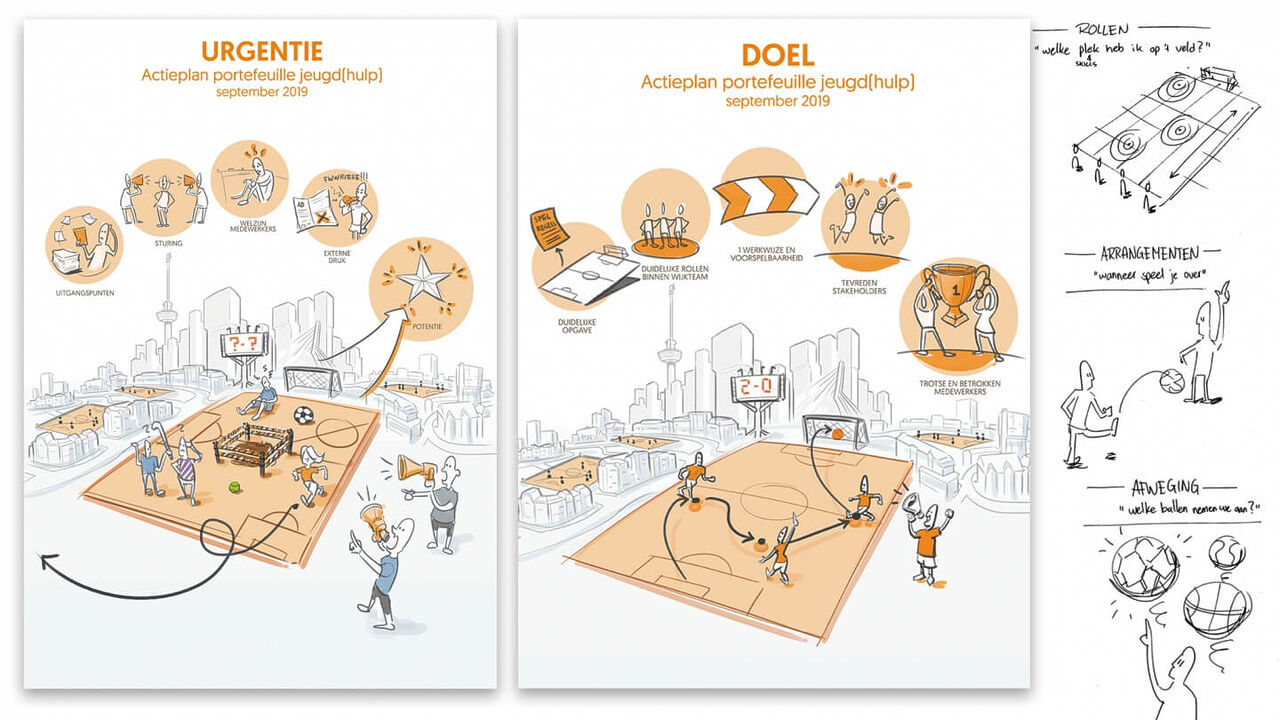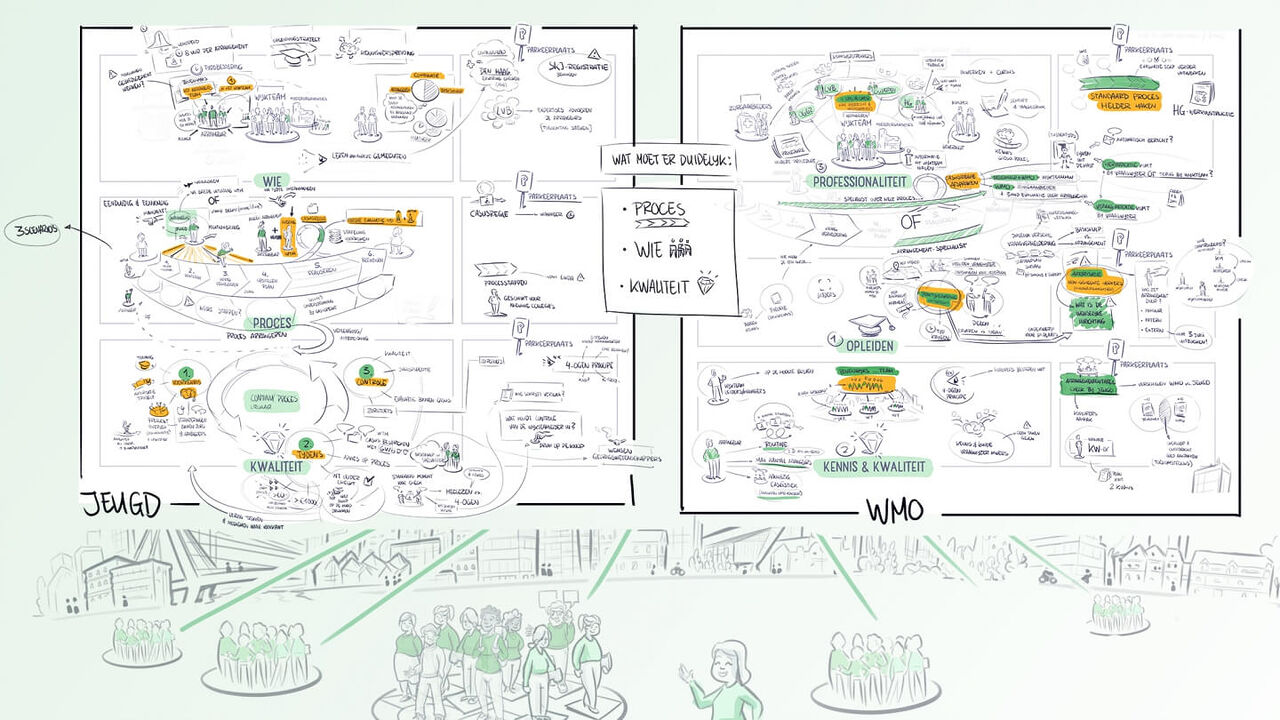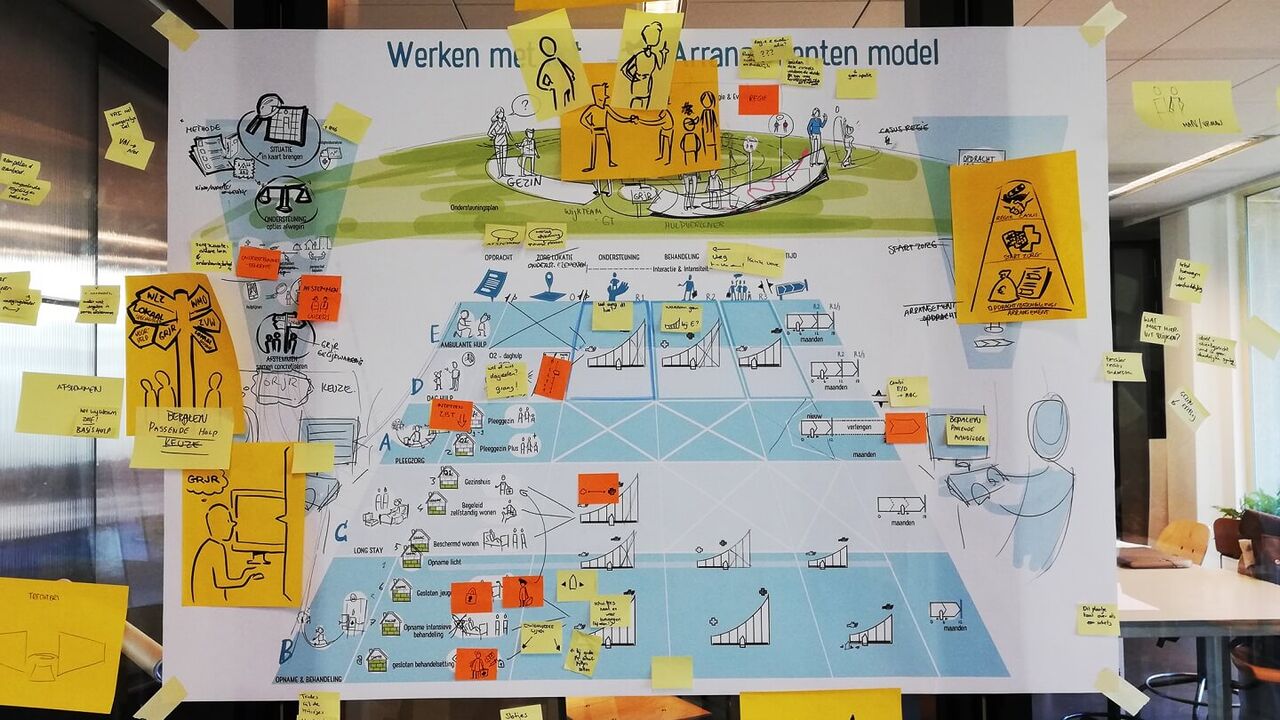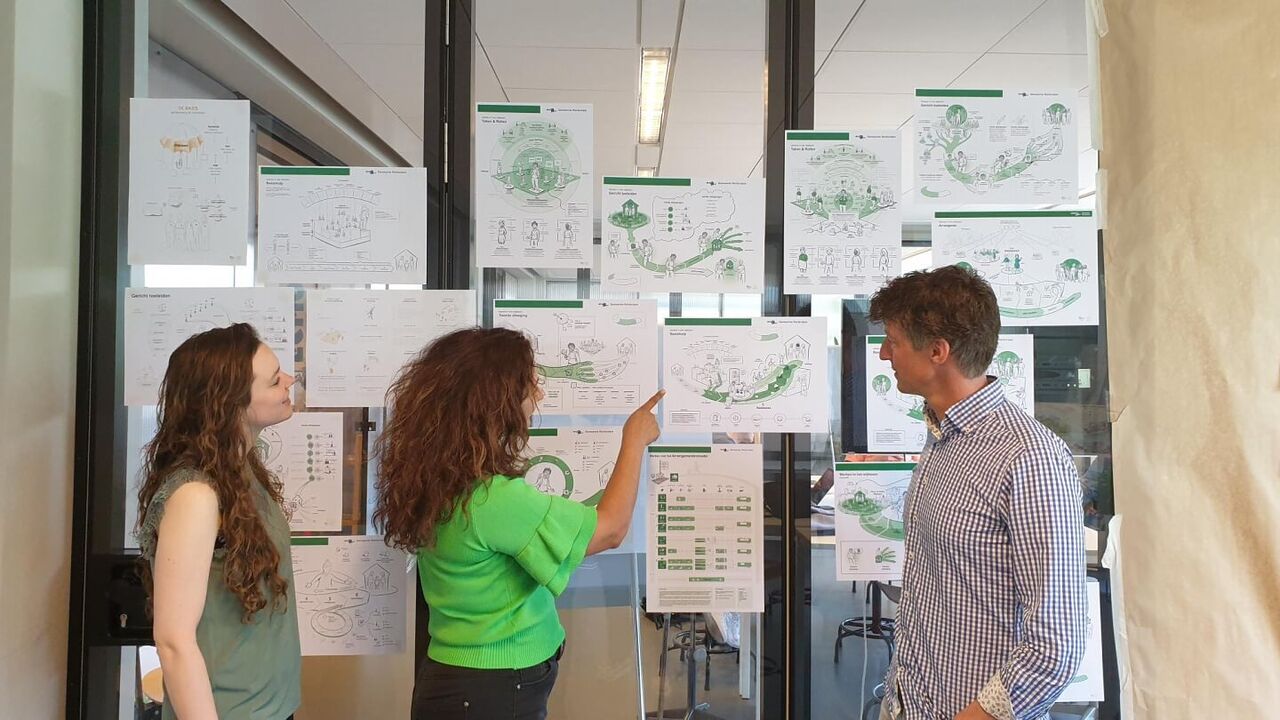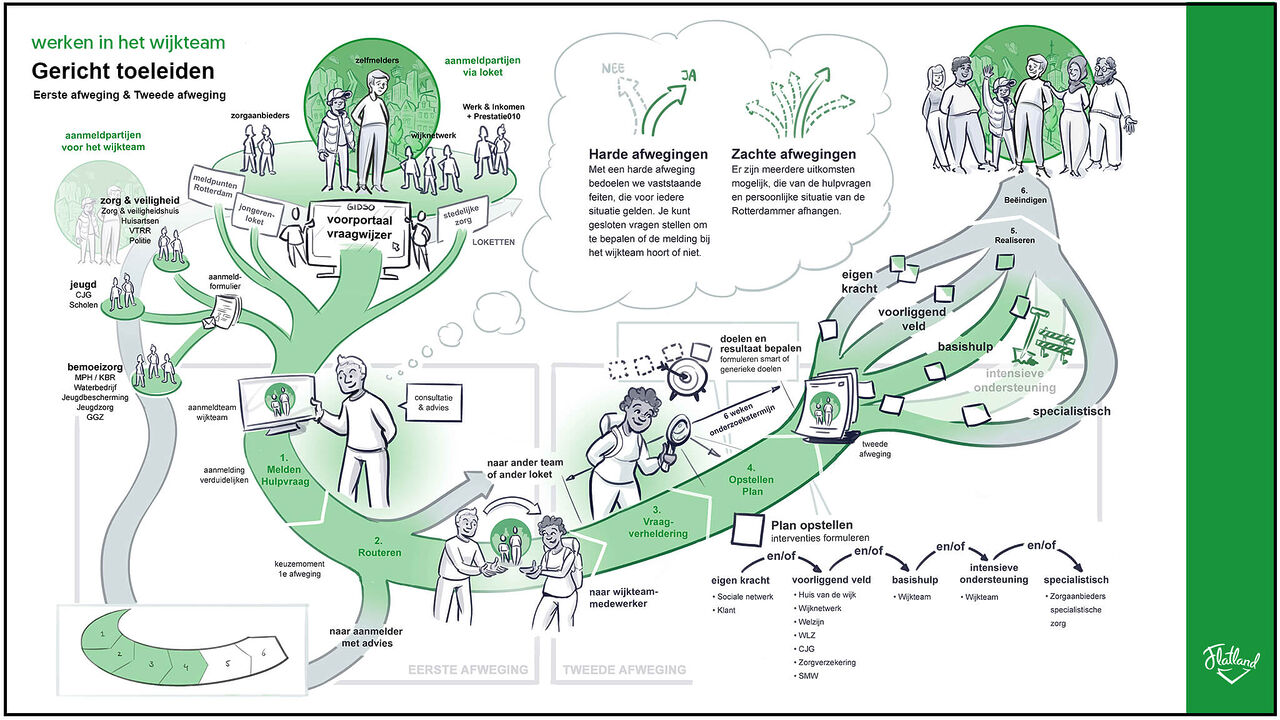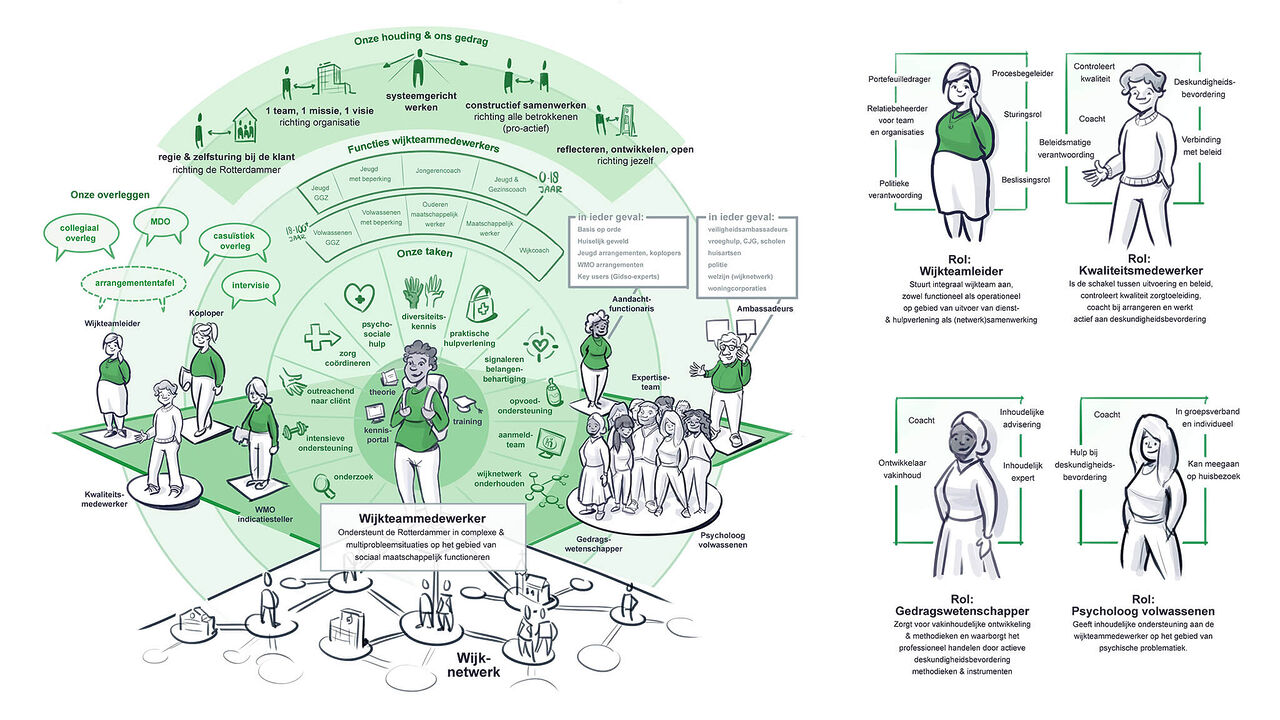Shared working method clear for Social Teams Rotterdam
The application
Since 2015, many municipalities have started using social neighbourhood teams to support residents on welfare, care and health issues. After almost five years of working in this new set-up, it was time to take a close look at how all these different neighbourhood teams work. What had we been thinking about again? How do we do it in practice? What can we improve and formalise for the future?
In a three-year collaboration, Flatland worked with the Team Vakontwikkeling of the Municipality of Rotterdam to develop several visualisations together. On topics such as basic help, referral and case management, and from overview drawing to workflow to arrange youth care. The aim was to clarify and develop the working methods of all roles and teams, but it brought so much more…
Need for a clear picture of how things work
Neighbourhood team members provide appropriate and timely basic help close to home and work together with, for example, GPs, schools, youth health care and mental health services. Often a team consists of social workers, family coaches and other professionals in the field of parenting, youth assistance, finance and debt. The composition differs per district team, and each district has its own district team. In total, there are 43 integral neighbourhood teams in Rotterdam, with a total of some 1,200 staff.
Further development requires a clear picture of the working method: where exactly are we from, how do the lines run and what can we learn from each other? But you don’t just get that done, with so many different people, roles, compositions, networks and ways of working. So the Professional Development Team came to Flatland with the question: how can we ensure that we get an overview of all the different components and the logic of the work processes? And that this process really makes sense and sticks?
Working method
The solution: drawings as a bridge between policy and practice
Usually, when a change or renewal task is undertaken, everything is meticulously written down by (policy) consultants. They have much know-how of the content, but often also just too much knowledge, a need for completeness and a tendency towards details. The result: there is a thick report and a beautiful plan of action, but then little happens with it in practice. The report ends up in a drawer somewhere.
Why is that? There is often a gap between policy and practice, and between all the details in the work process and the perception of the professional. But if we let employees think and contribute, there is more attention to their perception and it creates more clarity and support. Indeed, neighbourhood team members were happy and proud to participate! And instead of abstract and woolly language, visualisations make everything much more concrete, so we also work with drawings during all sessions.
Storytelling
First we prepared the approach together with the Professional Development Team, then we organised sessions with various neighbourhood team members. The team leaders, but especially the professionals, were put forward in these sessions: after all, they know exactly how unruly practice is. For the very first kick-off, we used a football metaphor toclarify the urgency and objectives of our programme, so that people could immediately relate to it. Storytelling works well as a way to get a bigger or more abstract issue across. What place do you have on the field and which balls do you take on, or pass on? For each topic, we did several sessions in which we figured out the system and the lines together and visualised them immediately.
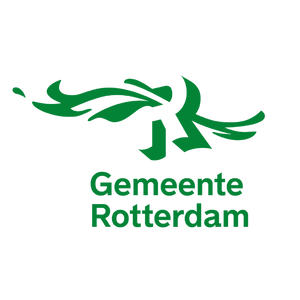
''Colleagues said: We should have done this five years ago!''
Co-creation is discussion: drawings lead to conversation
When you work with so many people together, the trick is to find the balance between essence and completeness. On the one hand, you want the story to be complete enough, with room for all the details and different priorities. At the same time, it is precisely about making the overlap visible, and getting the essence clear. How general do you stay so that everyone recognises and all people feel recognised and heard?
Then co-creation is sometimes difficult: everyone has a different opinion. But precisely because of this, a shared picture emerges: the drawings lead to very concrete conversations. Very often work processes are tightly protocolled, but it helps to transcend that and look at each other’s work together. In this way, the slides provide exactly enough guidance for a joint approach while at the same time leaving enough room for individual interpretation.
The result
Result: a shared way of working kept alive
Together, we drew up an unambiguous and clearly described working method, with a clear visualisation for each topic. An instruction film was made to accompany each talking plate, and with it we created an integral manual: ‘Working in the Neighbourhood Team, the basics‘. And even though the first plate is now three years old, that basic visualisation has survived and is still being actively used after all these years. After the visualisations were ready, the core team organised a kick-off for 600 people. For all colleagues, the plates were bundled, with a QR code to the digital version.
Each month, the team organised a theme (‘The month of…’) to highlight a specific component. A good idea to keep this shared working method alive: the core team regularly uses the derivations, or cut-outs from them. And regular use means really regular use: in all newsletters, intranet, handbook, separate presentations, reports, familiarisation documents and even as background in Teams.
Pride and recognition
Els van Lierop, professional development adviser at the municipality, was most involved in the project and the instigator of the talking boards. Els says the plates are even used occasionally with clients. In a complicated case with a mother, the neighbourhood team member picked up the case management plate and was able to explain very well what everyone’s role is in the assistance. Colleagues working in the neighbourhood teams from day one responded, “We should have done this five years ago!”
Such pathways – without exception – bring recognition to staff and make people proud of their jobs(again). Nice to be recognised in the complexity of your daily work. There are many staff changes in this sector, and visuals have even become part of the onboarding programme. “Oh, wait, THIS is how the lines run!” Existing staff find each other faster, new people understand more quickly what is expected of them. And when you see people picking up the drawings independently, you notice that they provide enough guidance and are definitely of added value.
Discuss how visual work can help you?
Get in touch with Thomas. He is happy to think along with you!
ContactVisual Strategist

